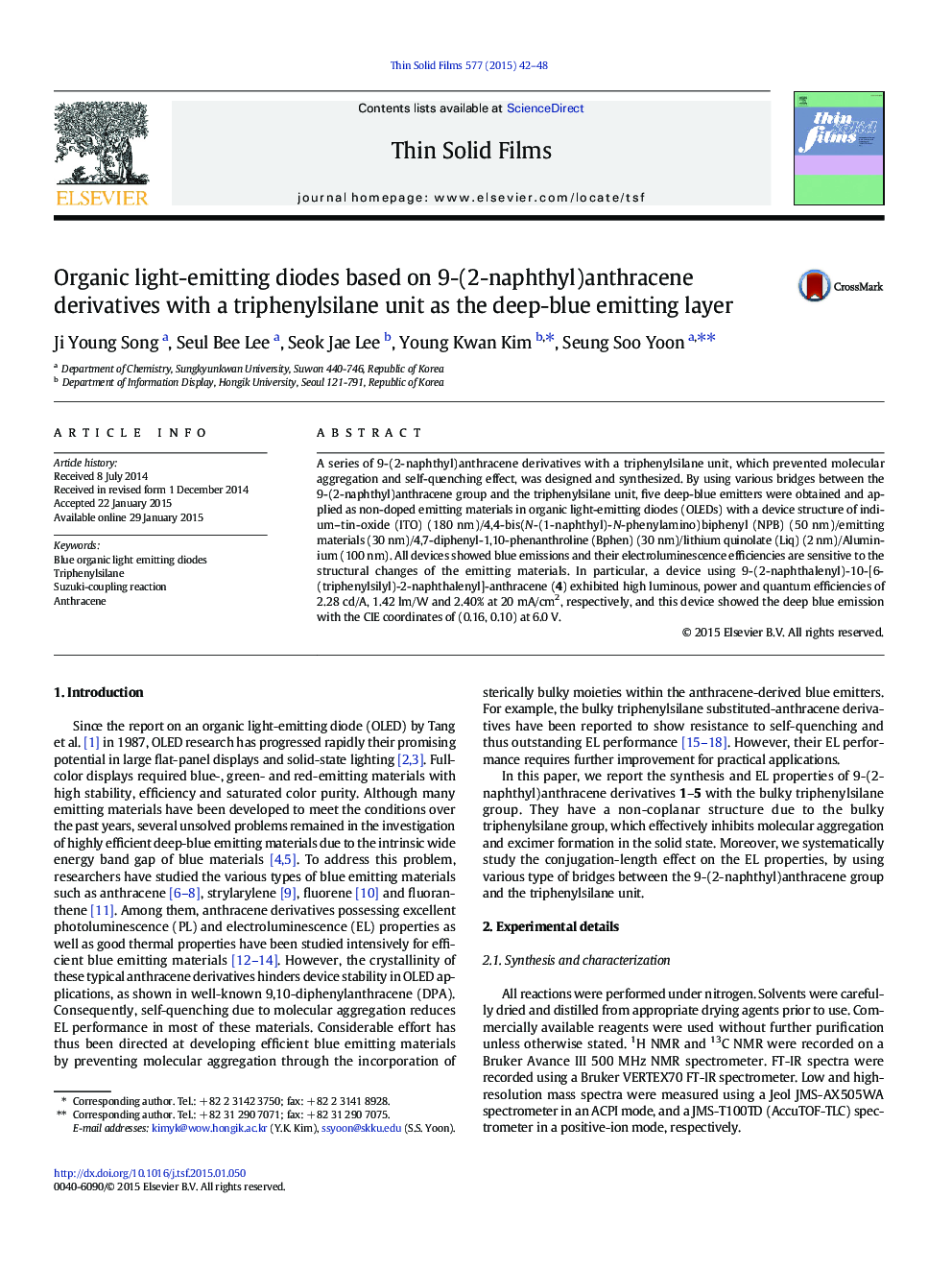| Article ID | Journal | Published Year | Pages | File Type |
|---|---|---|---|---|
| 1664892 | Thin Solid Films | 2015 | 7 Pages |
•We synthesized 9-(2-naphthyl)anthracene derivatives with a triphenylsilane unit.•We study the conjugation-length effect on the electroluminescence properties.•The bulky triphenylsilane-anthracene derivatives show resistance to self-aggregation.
A series of 9-(2-naphthyl)anthracene derivatives with a triphenylsilane unit, which prevented molecular aggregation and self-quenching effect, was designed and synthesized. By using various bridges between the 9-(2-naphthyl)anthracene group and the triphenylsilane unit, five deep-blue emitters were obtained and applied as non-doped emitting materials in organic light-emitting diodes (OLEDs) with a device structure of indium–tin-oxide (ITO) (180 nm)/4,4-bis(N-(1-naphthyl)-N-phenylamino)biphenyl (NPB) (50 nm)/emitting materials (30 nm)/4,7-diphenyl-1,10-phenanthroline (Bphen) (30 nm)/lithium quinolate (Liq) (2 nm)/Aluminium (100 nm). All devices showed blue emissions and their electroluminescence efficiencies are sensitive to the structural changes of the emitting materials. In particular, a device using 9-(2-naphthalenyl)-10-[6-(triphenylsilyl)-2-naphthalenyl]-anthracene (4) exhibited high luminous, power and quantum efficiencies of 2.28 cd/A, 1.42 lm/W and 2.40% at 20 mA/cm2, respectively, and this device showed the deep blue emission with the CIE coordinates of (0.16, 0.10) at 6.0 V.
